How Long Does Memory Foam Pillow Last
Your memory foam pillow will typically last 2-3 years with proper maintenance, though high-quality models can endure up to 10 years. You'll know it's time for replacement when your pillow stops bouncing back to its original shape, develops lumps, or emits unpleasant odors. Regular care, including using a pillow protector and following manufacturer cleaning guidelines, can greatly extend its lifespan. Pay attention to warning signs like persistent neck pain or poor sleep quality, as these indicate your pillow's support is diminishing. Keep in mind that maintaining proper pillow performance is vital for your overall sleep health and comfort. Understanding the key indicators of pillow wear will help you make timely replacement decisions.
This post may contain affiliate links. If you make a purchase through these links, I may earn a commission at no additional cost to you. Additionally, portions of this post may be generated using artificial intelligence (AI) technology. While we strive for accuracy, please be aware that AI-generated content may not always be perfect and should be fact-checked when necessary.
The Spatula Scoops
- Standard memory foam pillows typically last 2-3 years with normal use and proper maintenance.
- High-quality memory foam pillows can last up to 10 years when properly cared for.
- Regular cleaning, using pillow protectors, and proper storage significantly extend a memory foam pillow's lifespan.
- Signs of replacement include visible damage, loss of shape, persistent odors, and failure to regain form after folding.
- Waking up with neck pain or discomfort indicates the pillow has lost its supportive properties and needs replacement.
Memory Foam Pillow Basics
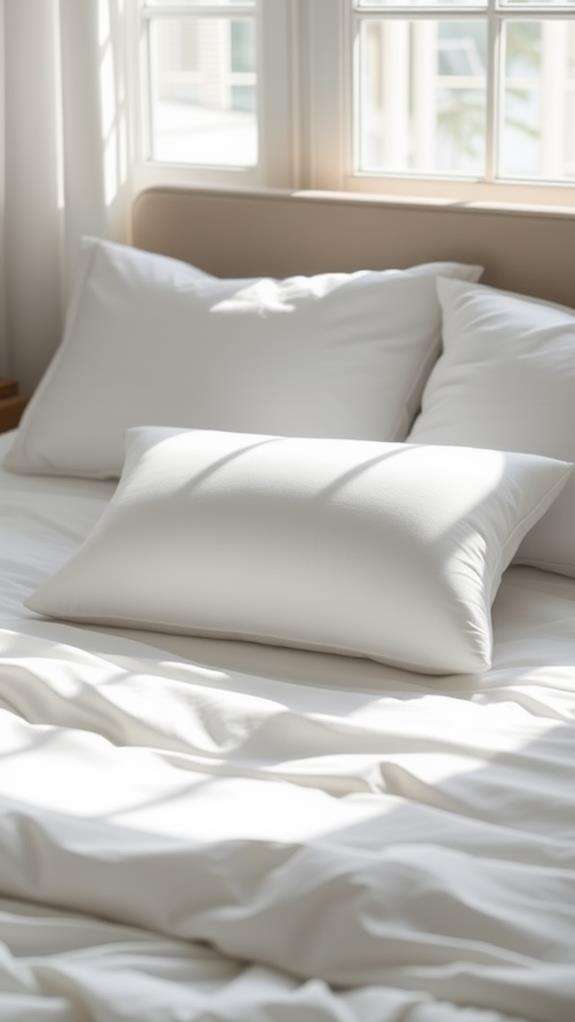
A memory foam pillow represents a modern sleep solution crafted from polyurethane material that's engineered to conform to your unique body shape. When you rest your head on these innovative pillows, they respond to your body heat and pressure, creating a personalized cushioning effect that supports your head and neck throughout the night.
The durability of memory foam pillows sets them apart from traditional options, with a typical lifespan ranging from 2 to 3 years for standard models. If you're investing in high-quality versions, you'll find they can last up to a decade with proper care and maintenance. You'll appreciate how these pillows maintain their shape and support capabilities, requiring less frequent replacement than conventional alternatives.
The quality of your memory foam pillow directly impacts its longevity and comfort level. When you're shopping for one, you'll want to examine factors like material density, construction methods, and overall craftsmanship. Regular maintenance is straightforward – you won't need complex cleaning routines to keep your pillow in top condition, which helps preserve its supportive properties and extends its useful life.
Signs of Pillow Wear
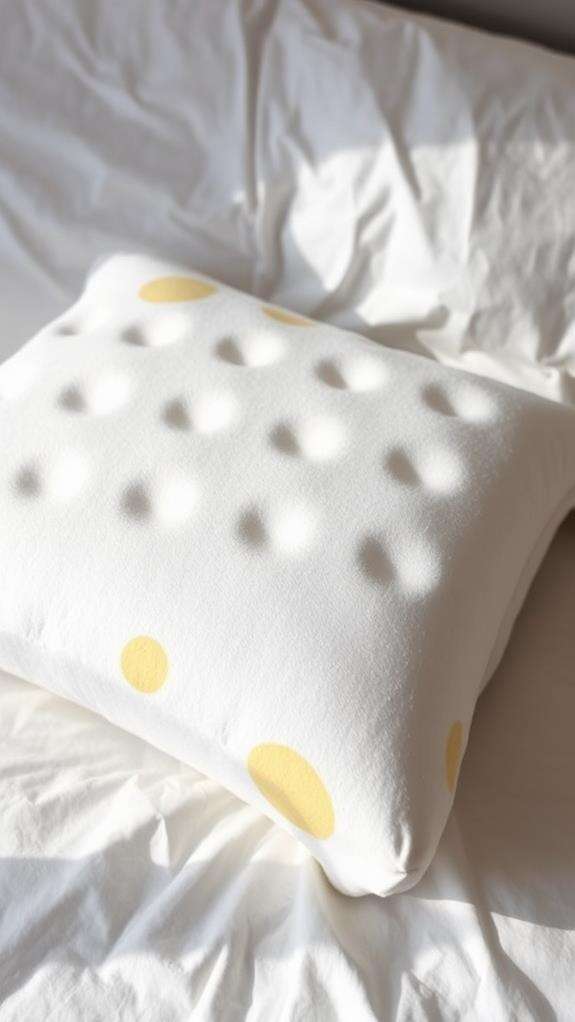
While understanding the basics of memory foam pillows helps you make an informed purchase, recognizing signs of wear guarantees you'll know exactly when to replace them. Your pillow needs replaced when it exhibits specific indicators that compromise its functionality and your sleep quality.
| Sign of Wear | What to Look For | Action Needed |
|---|---|---|
| Physical Damage | Visible rips or holes, stains | Replace immediately |
| Support Issues | Loss of shape, lumpy texture | Plan replacement soon |
| Hygiene Concerns | Unpleasant odor, discoloration | Replace for health safety |
You'll know it's time for replacing your pillow when you notice persistent neck or back pain upon waking, as this indicates your pillow isn't providing proper support anymore. A quick way to assess your pillow's condition is the fold test – if you fold it in half and it doesn't spring back to its original shape, it's lost its supportive properties. While memory foam pillows last typically 2-3 years, you shouldn't wait that long if you notice signs of wear earlier. Watch for any unpleasant odors, which signal bacterial growth, and check regularly for visible damage that could affect your sleep quality and health.
Sleep Quality Impact
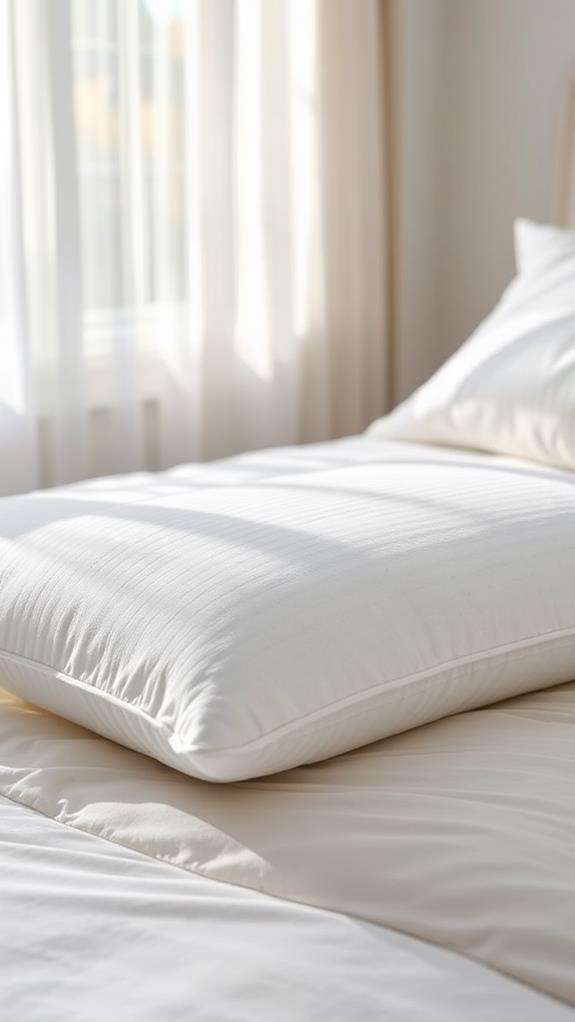
Sleep quality suffers considerably when your memory foam pillow loses its vital supportive properties. You'll notice your sleep becoming increasingly disrupted as your old pillows fail to maintain proper neck and spine alignment throughout the night. When it's time for a new pillow, you'll likely experience clear warning signs, including frequent nighttime wake-ups and morning discomfort.
Your pillow's comfort and support directly influence your overall well-being, making proper pillow care essential for maintaining ideal sleep quality. If you're waking up with persistent headaches or neck pain, these could be telling signs it's time to replace your worn-out memory foam pillow. Continuing to use a degraded pillow can lead to lasting health problems that extend beyond just poor sleep.
Whether you're considering organic pillows or traditional memory foam options, recognizing when to replace your pillow is important for your sleep health. You'll want to pay attention to how well your pillow maintains its shape and supports your head throughout the night. When support diminishes, your productivity and daily comfort may suffer, making pillow replacement a priority for maintaining consistent, quality sleep.
Extending Your Pillow Lifespan
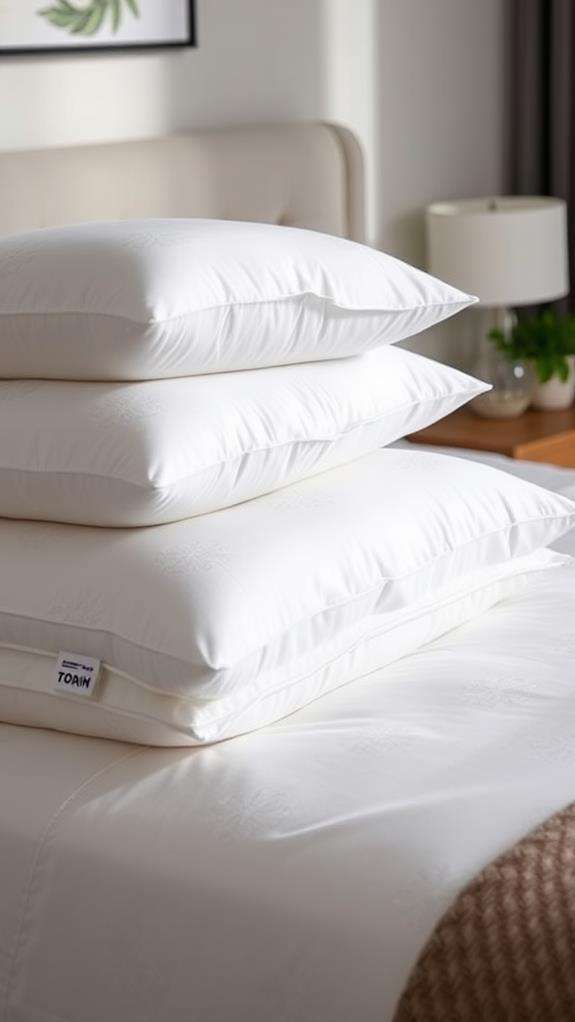
To maximize your investment in quality sleep, proper memory foam pillow maintenance can add years to its functional lifespan. With consistent care and attention to cleaning routines, you'll guarantee your pillow remains supportive and hygienic for an extended period.
You'll want to establish a regular cleaning schedule, washing your pillowcase frequently and deep-cleaning your memory foam pillow every 3-6 months to eliminate bacteria and prevent moisture buildup. Don't forget to use a pillow protector as your first line of defense against allergens and unwanted moisture that could compromise your pillow's integrity.
Proper care extends beyond cleaning – you'll need to maintain your pillow's shape through regular fluffing and confirm it's stored in ideal conditions. Keep your memory foam pillow away from extreme temperatures and humidity, which can affect its structural integrity. When you're not using it, store it in a clean, dry environment to extend durability.
Following the manufacturer's maintenance instructions is vital for preserving your pillow's performance. While you'll eventually need to replace your memory foam pillow, these care practices can notably extend its lifespan and maintain its supportive properties longer.
When to Buy New
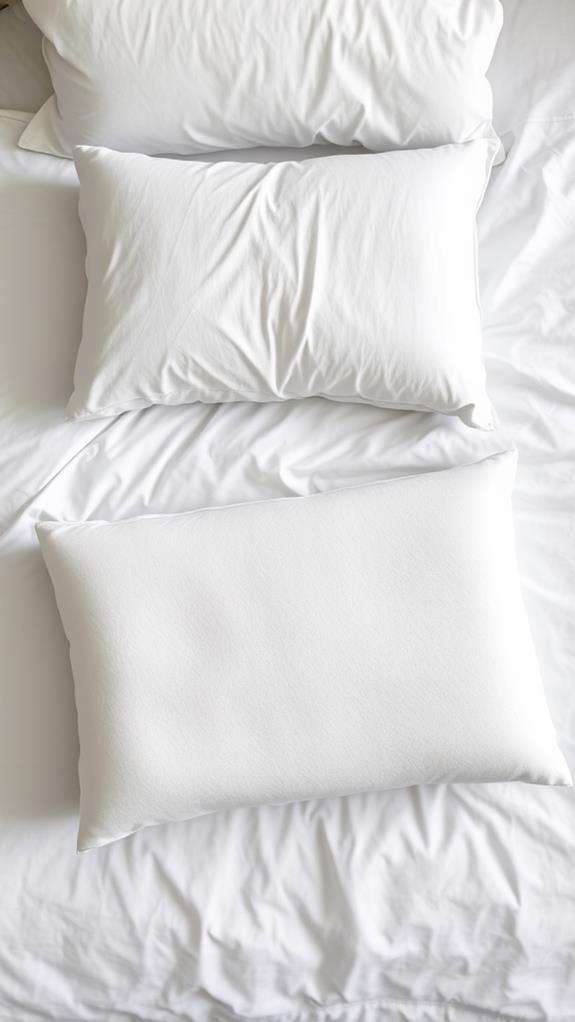
Recognizing when to replace your memory foam pillow is essential for maintaining ideal sleep quality and neck support. While these pillows typically last 2-3 years, you'll need to monitor specific signs that indicate it's time for a replacement, regardless of the timeframe.
Pay attention to your pillow's physical condition and how your body responds to it. If you're waking up with neck pain or discomfort, your pillow likely isn't providing the support it once did. Watch for visible signs of wear, such as lumps, permanent indentations, or flattening of the memory foam material. These changes in the pillow's structure directly impact its ability to support your head and neck properly.
You'll also want to evaluate the pillow's hygiene. When you notice persistent unpleasant odors, it's a clear health signal that bacteria or mold might be present. Even if your pillow appears in decent condition, these invisible concerns warrant replacement. Don't wait until your comfort is severely compromised – being proactive about replacing your pillow when you spot these warning signs will help maintain your sleep quality and overall health.
Frequently Asked Questions
How Often Should You Replace Memory Foam Pillows?
Like clockwork, you should replace your memory foam pillow every 2-3 years to maintain ideal sleep quality. However, if you've invested in a premium brand like Panda, you can expect it to last up to 10 years. You'll know it's time for a replacement when you notice lumps, unpleasant odors, or persistent neck discomfort. Regular maintenance, such as washing and fluffing, can extend your pillow's life, but don't ignore signs of deterioration.
Do Memory Foam Pillows Go Bad?
Yes, memory foam pillows do go bad. You'll notice they're deteriorating when they lose their supportive structure, become lumpy, or stay permanently flattened. If you're experiencing persistent odors, visible wear, or discomfort while sleeping, your pillow's likely gone bad. Over time, your pillow accumulates dead skin cells, sweat, and allergens, which can compromise both its structure and hygiene. That's why you'll need to monitor your pillow's condition regularly.
When Should You Throw Out a Memory Foam Pillow?
While memory foam pillows typically last 2-3 years, you'll want to replace yours when you notice specific warning signs. You should throw out your memory foam pillow if it's lost its shape, feels lumpy, or doesn't bounce back after compression. Watch for visible wear like holes or stains, unpleasant odors, or persistent allergy symptoms. If you're waking up with neck pain or headaches, it's a clear signal that your pillow's no longer providing proper support.
How to Know if a Memory Foam Pillow Is Bad?
You'll know your memory foam pillow is bad if you notice several key signs. Watch for visible wear like lumps or flatness, or if it doesn't bounce back to shape when pressed. If you're waking up with neck pain or headaches, that's a red flag. Check for unpleasant odors, which signal bacteria growth, and look out for yellowing or stains. Try the fold test – if your pillow doesn't hold a crease when folded, it's lost its supportive structure.





